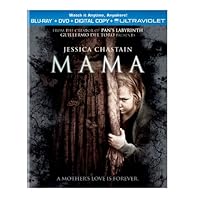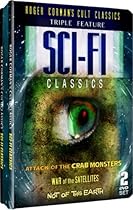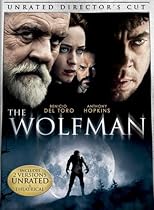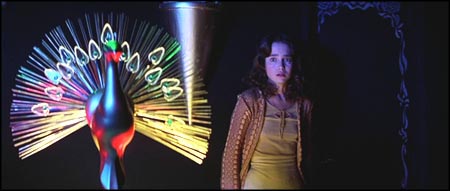While visiting a Los Angles courthouse last month to testify at the murder trial of Christian Karl Gerhartsreiter, I had a strangely irrelevant epiphany: Those of us with a Sense of Wonder are living in the Golden Age of Gods and Monsters. This revelation had nothing to do with our legal system and everything to do with the location: with Chinatown and Little Tokyo within walking distance of the courthouse, a trip like this would, once upon a time, have been an opportunity to stock up on items difficult if not impossible to obtain elsewhere. There used to be – and, to some extent, still is – an almost literal cornucopia of videotapes, laserdiscs, DVDs, and action figures related to Fant-Asia, Anime, and Kaiju cinema in the family-owned shops downtown. If you wanted to see POKEMON with its Japanese dialogue or check out the SUPER SENTAI series in its original form (before being cannibalized for POWER RANGERS), or if you wanted VHS tapes of the 1990s-era Godzilla films (which went unreleased in the U.S for nearly a decade), this was the place to go: such an opportunity was not to be missed; leaving empty-handed was not an option. However, on this occasion, when searching my memory banks for hard-to-find horror, fantasy, fiction science fiction films and memorabilia that I should seek out in the nearby stores, I came up blank. Because, you see, fewer and fewer cult movies are hard to find these days; almost anything we want is available at the push of a button.
Heading home, I registered a certain disappointment, much as many people mourn the passing of their favorite local video stores. But unlike the doom-sayers who think this as something akin to a huge chunk of our cultural heritage disappearing down a black hole, I realized that just the opposite is true: we now have instant access to even the most obscure elements of our cinematic heritage. The search for little-seen films no longer forces us to search through dusty shops like Allan Quatermain delving into King Solomon’s Mines; we need no longer wait for the occasional airing on late-night television or – even more rarely – a screening at a revival house.
Anyone old enough to remember the early days of Cinefantastique magazine should appreciate this. Those old back issues are loaded with capsule reviews of foreign fantasy films and cult exploitation horror that never received nationwide release. Some odd-ball opus would open at a single theatre in New York City or at a mid-west drive-in, never to be seen again. You would read the review of the latest Mario Bava film or of TOMBS OF THE BLIND DEAD and wonder, “When will I ever have a chance to see this?” And the answer usually seemed to be: Never.
Beginning in the 1980s, the home video revolution changed that, making hundreds of unreleased or barely released titles available. However, beneath the deluge of cinematic sea creatures, Aztec mummies, and grind-house gore, there lay buried an unfortunate truth: it cost money to manufacture tapes and discs, and not every lost title was potentially profitable enough to justify a release.
To a great extent, our current era of ,video on demand, digital downloads, and streaming video has changed that, by eliminating the costs of manufacturing and distribution. Yes, most of the titles on Netflix or Amazon Instant View have been restored and remastered for DVD and/or Blu-ray; nevertheless, the streaming options offer an additional source of revenue and little additional cost. Moreover, with public domain options such as Archive.org and Pub-D-Hub, many older titles that have gone out of copyright are now available for free viewing. Fans can even post these films, in their entirety, on YouTube.
This overload of obscure cinefantastique may mean little to viewers interested only in the latest box office blockbusters. However, a Sense of Wonder can find expression in many strange ways ways, not all of them likely to appeal to a wide swath of the ticket-buying populace. Fans eager to revisit old favorites or to seek out previously unavailable films for the first time are benefiting from 21st Century technology in ways almost unimaginable even a few years ago. To wit:
- You want J-Horror? JU-ON 2 is currently available on Netflix, along with SHOCK CORRIDOR and dozens of other Asian scare shows. If that is not enough, head over to Asian Crush.
- You want Kaiju? Check out the Godzilla titles on Sony Pictures’ Crackle.com. Also, Gamera is flying all over Pub-D-Hub.
- You want anime? Check out Crunchyroll.com or Starz’ Manga channel.
- You want obscure Hammer horror? SHADOW OF THE CAT (1961) – a film long available only in bootleg DVDs – is up on YouTube.
-

click to view instantly
You want Ray Harryhausen’s stop-motion monsters? IT CAME FROM BENEATH THE SEA (1955) and 20 MILLION MILES TO EARTH (1957) are up on YouTube. You can watch the colorized version of the latter on Amazon Instant View. THE VALLEY OF GWANGI (1969) and THE BEAST FROM 20,000 FATHOMS (1953) are available in high-definition at the Warner Archives instant viewing service. - You want Euro-horror? ZOMBIE LAKE (1981) and OASIS OF THE ZOMBIES (1982) are on Netflix. Fans of Paul Naschy’s doomed werewolf Waldemar Daninsky can catch ASSIGNMENT TERROR (1970) on Flixstream.com’s Drive-In Classics; even better is LA NOCHE DE WALPURGIS (a.k.a. THE WEREWOLF VS. THE VAMPIRE WOMAN, 1971) is on YouTube – uncut, widescreen, in Spanish with subtitles. (You can buy this one on Amazon Instant View, but it’s the shorter, English-dubbed version.)
- You want an eclectic mix of vampires, aliens, and giant monsters? Creepster.tv has a little bit of everything: COUNT DRACULA AND HIS VAMPIRE BRIDE (1973), ALIEN CONTAMINATION (1980), GORGO (1960). One particularly obscure item is HORROR CASTLE (a.k.a. THE VIRGIN OF NUREMBERG, 1963), with Christopher Lee, which combines Gothic horror with a post-WWII murder-mystery.
- You want classics? THE PHANTOM OF THE OPERA (1925) is on Netflix and several public domain sources; so is WHITE ZOMBIE (1932). THE VAMPIRE BAT (1933) and SVENGALI (1931) are on Pub-D-Hub. The brilliant, silent docu-drama HAXEN (“Witchcraft,” 1922) is available on Archive.org. Warner Archives offers such titles as FREAKS (1932), CAT PEOPLE (1942), THE CURSE OF FRANKENSTEIN (1957), SOYLENT GREEN (1973), THE WITCHES (1990), UNTIL THE END OF THE WORLD (1991), and many others.
- You want something new? New theatrical films from Magnet Releasing and other independent outfits frequently show up on Amazon Instant View and iTunes downloads weeks before they reach the big screen. An excellent film like THE SORCERER AND THE WHITE SNAKE (2012) – which once you would have had to track down on import disc in some specialty store – made its U.S. debut that way; now it is available on Netflix.
I could go on, but you get the idea. If some of these titles are not familiar to you, that is the point: these are low-profile films long buried in obscurity that, zombie-like, have been revived by the modern wizardry of the Internet. And now, like vampires who can cross the threshold only when invited, they are waiting for you to open your video portals and let them in. Some of these outlets are available only on the Internet; others are accessible through your Roku box, PlayStation, or XBox. All of them allow you to watch movies instantly – movies that you once would have waited months – even years – to see. Why not take advantage of this new virtual world of Gods and Monsters?
[serialposts]
You can find many of these titles available for instant viewing in the Cinefantastique Online Store, powered by Amazon.








